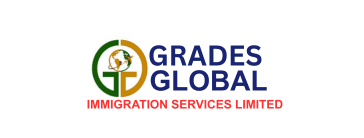Almost all Temporary Work Permit (TRP) holders in Canada (such as those on work, study, or visitor visas) think that finding a job is the most important step they can take. They can not only become permanent residents but also establish a financial foundation. Express Entry’s Most In-Demand Jobs in Canada
Table of Contents
In fact, several individuals new to Canada have expressed an interest in understanding the current labor market and which occupations are in high demand. This knowledge might assist them in streamlining the immigration process and their job search. Express Entry’s Most In-Demand Jobs in Canada
So, for better alignment between immigration and the labor demands of the Canadian economy, Immigration, Refugees and Citizenship Canada (IRCC) has introduced a category-based selection draw. According to this new approach, candidates with experience in professions critical to the country’s economic growth are prioritized. Express Entry’s Most In-Demand Jobs in Canada
In particular, IRCC focuses on 5 categories of occupations that are in demand.
- Healthcare;
- Science, Technology, Engineering, and Mathematics (STEM);
- Trade;
- Transport; and
- Agriculture and agri-food.
The Canadian government has compiled a list of jobs that are in high demand and that it believes are important for the country’s employment market. This list helps determine what jobs are needed and which ones the government wishes to prioritize. Comparing this list with similar lists produced by job experts and websites, we see that many jobs are equally important across multiple industries.
Note – According to IRCC’s list, the following lists cover the most common job titles in Healthcare and STEM occupations. In-demand professions will be covered in full on the occupation lists for the remaining categories. You can find a complete list of job titles and access the “category-based selection” draw eligibility tool on our dedicated webpage here. There are also codes of professions from the National Occupation Classification (NOC) 2021 for your reference.
Healthcare occupations
Healthcare occupations include workers in many fields, such as physicians, physiologists, psychologists, etc. Most of these professions have the following job titles:
Nurses
Here are some nursing professions that are targeted:
- The license of a practical nurse (NOC 32101);
- Orderlies, nurse aides, and patient service assistants (NOC 33102);
- A nurse practitioner (NOC 31302);
- Midwives, physician assistants, and other allied health professionals (NOC 31303)
- Supervisors and coordinators of nursing (NOC 31300);
- A registered nurse (NOC 31301) or a registered psychiatric nurse (NOC 31301).
- Technical, medical staff, and lab/medical assistants
Targeted Professions
Here are some of the targeted professions:
- Technical options for medical laboratory assistants (NOC 33101);
- A medical laboratory technician (NOC 32120);
- Radiologic technologists (NOC 32121);
- A medical sonographer (NOC 32122);
- A pharmacy assistant or pharmacy technical assistant (NOC 33103);
- Helping doctors, midwives, and allied health professionals (NOC 31303).
STEM occupations
Many professions fall under STEM occupations, including architects, data scientists, land surveyors, etc. This category includes the following professional titles:
Engineers
Here are some of the targeted professions:
- Professional civil engineers (NOC 21300);
- Engineers (non-software and non-designers) in computer science (NOC 21311);
- Electrician and Electronic Engineer (NOC 21310);
- Operational management of engineering (NOC 2010);
- Engineers in manufacturing and industrial processes (NOC 21321);
- Materials and metallurgical engineers (NOC 21322);
- Designers and engineers of software (NOC 21231).
Business and computer systems specialists
Several professions are targeted, including:
- Managers of computer and information systems (NOC 20012);
- Developing computer systems and programming (NOC 21230);
- Security specialists (NOC 21220);
- Analysts and administrators of databases (NOC 21223);
- IT specialists (NOC 21222)
Trades occupations
A trade occupation is one related to a skilled trade that is required for manufacturing, construction, or repair purposes. The following are among them:
- Installers and service providers (NOC 73200);
- Engineers and constructors of elevators (NOC 72406);
- A machine fitter (NOC 72405);
- HVAC mechanics (NOC 7242);
- A construction millwright and an industrial mechanic (NOC 72400);
- A carpenter (NOC 72310);
- Plumbers (NOC 72300);
- Industrial and power system electricians (NOC 72200);
- Operators of welding machines (NOC 72106);
- Other construction trades, installers, repairers, and servicers (NOC 72014).
Transport occupations
A transport occupation facilitates the transport of people and goods on a commercial basis. The occupations are as follows:
- Inspectors and assemblers of aircraft (NOC 93200);
- Truck drivers (NOC 73300);
- Rail traffic controllers and maritime traffic regulators (NOC 72604);
- Engineers, water transportation (NOC 72603);
- Deck officers, water transportation (NOC 72602);
- ATCs and related occupations (NOC 72601);
- A pilot, a flight engineer, or a flying instructor (NOC 72600);
- Mechanical and aeronautical inspectors (NOC 72404);
- A railroad carman/woman (NOC 72403); and
- Transport managers (NOC 70020)
Agriculture and Agri-food occupations
Agricultural and agri-food occupations cover agriculture, landscaping, and food production professions. The occupations are as follows:
- Supervisors and contractors in landscaping, grounds maintenance, and horticulture (NOC 82031);
- Agricultural service contractors and farm supervisors (NOC 82030);
- Retail and wholesale butchers (NOC 63201).
Do I qualify for category-based selection?
The requirement for this category is that candidates have at least six months of continuous work experience, either abroad or in Canada, within the past three years. Also, they must already have an Express Entry profile.
It takes the candidate a while until the relevant Express Entry draw results in an invitation to apply (ITA) for permanent residency if they’ve applied for one of the Express Entry managed programs – the Federal Skilled Worker Program (FSWP), the Federal Skilled Trades Program (FSTP), or the Canadian Experience Class (CEC). It depends on whether they’re in one of the above categories or if they scored high on the CRS. Usually, immigration candidates are ranked by their CRS scores.
Once an ITA is received, candidates (now applicants) have 60 days to apply for permanent residence. Once the application has been approved, the applicant will be granted PR status and receive a Certificate of Permanent Residence (COPR). The freedom to make Canada their permanent home is available to them upon settlement.

